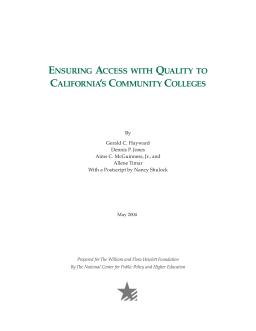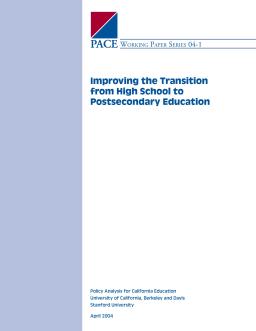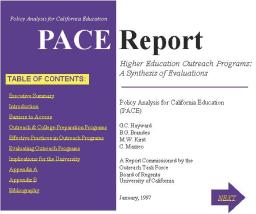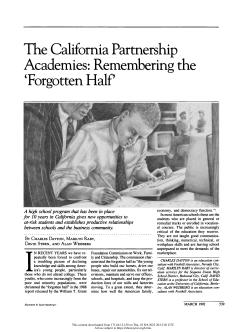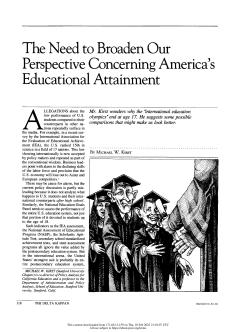Published
Summary
This report examines the critical role played by California Community Colleges in extending college opportunity to all, as envisioned in the 1960 Master Plan for Higher Education. However, the foundation of this longstanding commitment has eroded, and renewed commitment to college opportunity is urgently needed in the knowledge-based, global economy. The report calls for action from educational, governmental, philanthropic, and civic leaders to renew and extend opportunities to shape California's future.
Published
Summary
The Bridge Project, a study of K-16 issues, presents three papers on college transition. The first finds a widespread lack of knowledge about college requirements and readiness among California students and parents. The second analyzes how students receive vague signals about academic college readiness. The third provides an example of how to improve K-16 transition and send clearer academic standards signals. Policy implications include low or no-cost recommendations to address these issues.
New Education Policies
Published
Summary
Senior slump is a phenomenon unique to American high schools, where students view senior year as a time for nonacademic pursuits. This report suggests curtailing senior slump to add valuable months to students' education at a critical point in their intellectual development. Policy directives are presented to help American high schools reclaim the senior year.
A Synthesis of Evaluations
Published
Summary
The PACE report commissioned by the University of California aims to enhance university participation by disadvantaged and underrepresented students. It reviews evaluations of current outreach programs, identifies effective practices, and makes recommendations for program improvement and evaluation methods. The report analyzes the effectiveness of college preparation programs and suggests essential principles for program design. It also examines how to improve evaluations of outreach programs and the implications for policy decisions on future outreach efforts.
Remembering the "Forgotten Half"
Published
Summary
US high school students, especially those who do not attend college, have been found to lack skills and knowledge necessary for the job market. The California Partnership Academies program has been developed to address this issue and has been adopted by over 50 high schools. The program has received support and positive evaluations. Factors contributing to the issue include societal changes, the education system, and changes in the labor market. If these issues are not addressed, the US risks falling behind international competitors and a lower standard of living.
Published
Summary
The U.S. ranks low in international education comparisons, but the discussion is misleading because it does not look at postsecondary education. The value added by the postsecondary education system, including community colleges, trade schools, and universities, is ignored. The U.S.'s strongest suit is probably its entire postsecondary education system in the international arena.
